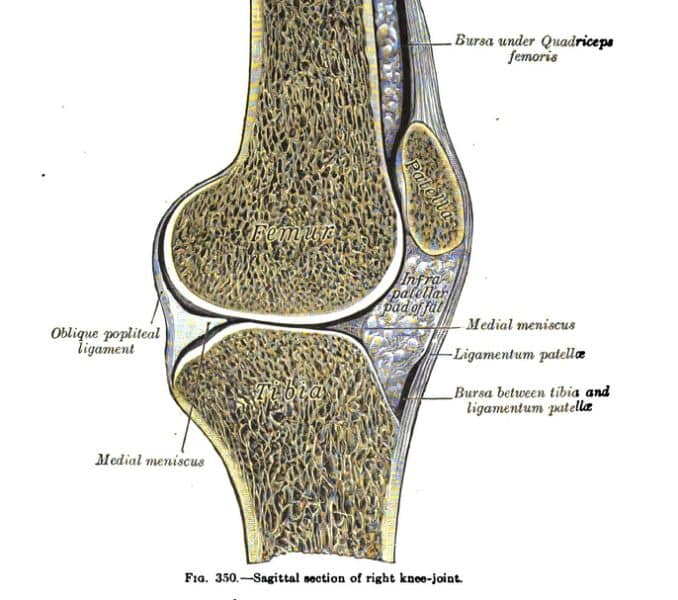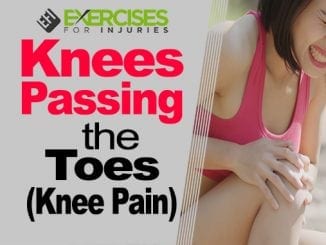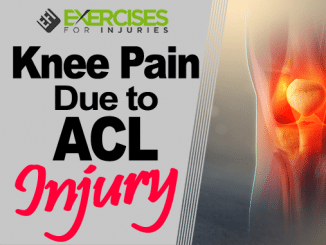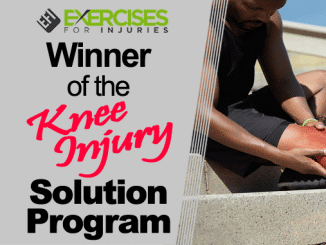
Knee pain can be a distressing experience for anyone. It can make moving around difficult, and even simple tasks like climbing the stairs or squatting can become challenging. In this article, we will discuss some of the most common causes of knee pain and how to manage it so that you can get back to your active life as soon as possible. There are many reasons why someone might experience knee pain, but fortunately, there are also several ways to prevent it from occurring or returning once it’s been dealt with. Read further to know more about the Overview of Knee Pain.
Largest Joint in the Human Body
The knee is the largest joint in the human body. In the most recent report of the U.S. Department of Health and Human Services, the knee is also one of the most commonly injured joints. More than 5.5 million orthopedic visits are made yearly due to knee injuries. The joint’s high susceptibility to injuries is mainly attributed to its intrinsic anatomical structure and function during weight-bearing. Moreover, because of the increasing problem of obesity and a sedentary lifestyle, knee injuries are one of the leading causes of disability in modern society.
Knee injuries are complex because they typically involve more than damaged structures. The anterior cruciate ligament, the major stabilizing ligament of the knee, is frequently the cause of knee pain and injury in young, healthy adults. ACL injuries can be devastating. A significant number of patients with ACL injuries require reconstruction, prolonged rehabilitation, and as a result, high health care costs. For these reasons, many researchers have focused on ACL injury prevention over the last few decades.
Neuromuscular training programs consisting of specialized stretching and strengthening exercises of the knee’s dynamic stabilizers, agility training, and plyometrics are the most effective strategies to prevent anterior cruciate ligament injuries. These exercise programs help clients regain and maintain knee functions without putting much force on the ACL. Some of these exercises are introduced in the last section of this guide.
Anatomy of the Knee
The knee is the largest joint in the body; however, it is highly susceptible to injuries. This has been attributed to its complex anatomical structure. A significant number of knee injuries involve the anterior cruciate ligament, especially in non-contact sporting activities. Understanding the anatomy of the knee joint, specifically the ACL, is fundamental to understanding the mechanisms of ACL injuries, development of signs and symptoms, treatment, and exercise
Bones
The knee joint is composed of 4 essential bones: the femur (thigh bone), tibia (shin bone), fibula (calf bone), and patella (kneecap). The tough ligaments and a knee capsule attach the femur to the tibia. The tips of these bones are covered by articular cartilages that keep them from grinding each other during movements. Most knee movements occur between the femur, patella, and tibia.
Femur
The femur is the primary weight-bearing bone of the upper leg. This important and highly demanding function is evidenced by its size and structure. The femur is the largest and strongest bone in the human body. It provides attachment sites to muscles that move the knee. At the lower end of the femur are two condyles – the round projections at the end of the bone; these are called the medial or inner condyle and the lateral or outer condyle. The medial condyle, the larger of the two, is more involved during weight-bearing activities.
Tibia and fibula
The bones of the lower leg are the tibia and the fibula. They run parallel, starting from the knee to the ankle. The fibula articulates with both ends of the tibia, allowing a slight movement.
Other Knee Pain Blogs
This is part 1 of this series. I will be putting up the next part over the next few days.
- ACL Injuries in Female Athletes
- 3 ACL Exercise Mistakes
- What to do about Knee Pain?
- To Leg Press or Squat if You Have an ACL Injury?
- NCAA and ACL Injuries
- Downhill Walking Good After ACL Surgery?
- Knee Injuries and Exercises with Kevin Yates






